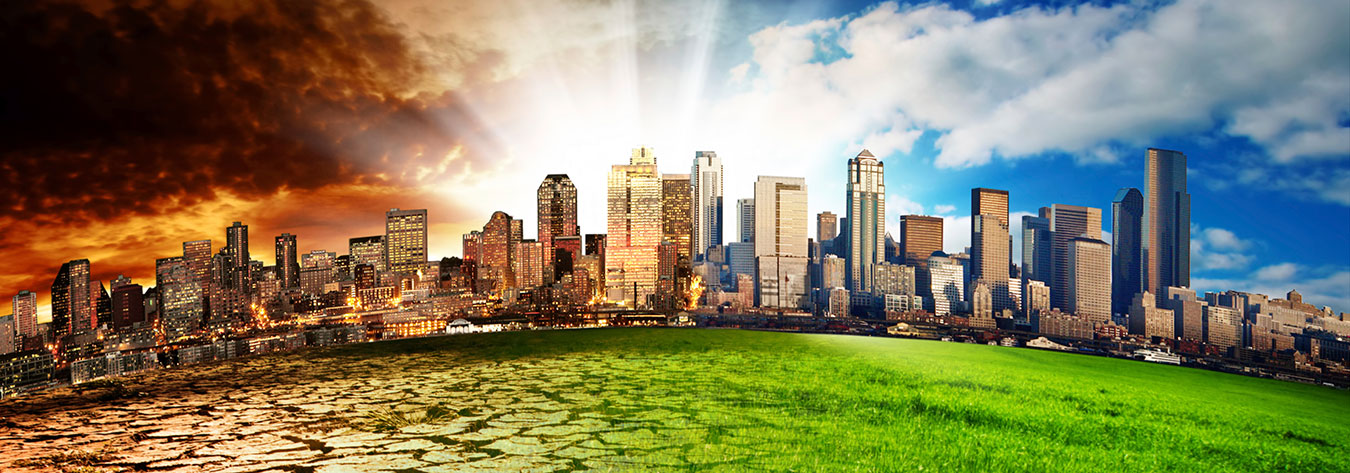As world leaders reached the midway point in their talks on climate change in Paris, news emerged that suggested industrial greenhouse gasses rose only slightly in 2014 and were set to have declined in 2015.
If true, this is indeed good news for the delegates at the United Nations Climate Change Conference (COP 21) in December. Ironically, the news was announced on the same day as the first red alert for smog was issued by Beijing, shutting down the city’s schools and imposing restrictions on the use of automobiles and factory operations.
The key aim of the conference was for all nations on the planet to arrive at a legally binding, universal climate agreement, to be signed in 2015 and implemented by 2020. Seen as crucial to achieving the objective was for global warming to be limited—by comparison with the pre industrial era—to less than an increase of 2 degrees Celsius by 2100.
Experts generally agree that this is the required figure to prevent catastrophic climate changes. What that means is that greenhouse gas emissions will need to be reduced by 40–70% by 2050, reaching 0% by 2100. So, is this doable?
Japan—the world’s fifth-largest emitter of greenhouse gasses—has set its goal of reducing emissions by 26% from 2013 levels by 2030. Moreover, at the conclusion of the Paris agreement, Prime Minister Shinzo Abe said it would do this “without sacrificing economic growth”.
The newly released figures appear to be encouraging but experts warn that emissions may rise again when the Chinese economy recovers from its recent period of slow growth.
Additionally, India has announced a plan to significantly increase the amount of coal it burns in power plants as it strives to bring millions of poor people onto the power grid.
China’s coal consumption grew threefold between 2000 and 2013. However, in the first 10 months of 2015, production fell 3.6%, compared with the same period last year. Again, this is good news, but there are those who argue that consumption of coal will increase when the economy improves.
China has said that its emissions will stop growing by 2030. However, local governments continue to build coal-fired power plants. Greenpeace reports that, in 2015 alone, 155 proposed plants were approved.
As COP 21 approached its final day, a new draft text was released. It had been edited from 43 to 23 pages and aims to tackle potential disputes. These largely centre on who should pay for the move towards a carbon-free society.
Emerging economies argue that the richer nations should bear the brunt but the US, for example, has insisted that major polluters such as China and India should also take part of the burden. Others have suggested that smaller but wealthier countries such as Singapore and South Korea should also be major contributors.
The European Union, negotiating on behalf of its member states, together with the African, Caribbean and Pacific Group of States, made up more than 50% of participants at the talks, which were chaired by French Foreign Minister Laurent Fabius. Delegates proposed a five-year review system, under which nations would re-examine their pledges on cutting emissions, and take appropriate action.
The US supported this “review and ratchet” system. As Secretary of State John Kerry was quoted as saying, “It has to be an agreement that endures, it must get stronger over time”.
Kerry also had a stark warning. “Unless the global community takes bold steps now to transition away from high carbon … we are facing unthinkable harm to habitats, infrastructure, food production, water supplies and potentially to life itself”.
But for all the hype, the pact is really just a beginning. The 1997 UN Conference, hosted by Japan, established the Kyoto Protocol that placed binding targets on the advanced economies (although the US later withdrew from it).
The Paris agreement is voluntary and there is no single timeline for nations to arrive at agreed reductions. This has prompted some critics to suggest that COP 21 has no real chance of reaching the goal of a less than 2 degree increase in global warming by this century’s end.







